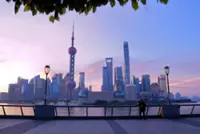The Kumtag Desert Scenic Area feels like another realm. — Photos: ONG HAN SEAN/The Star
Xinjiang is a land of diverse cultures and heritage, where fruits grow in abundance and the sights are unforgettable. Something to take note of while in Xinjiang, located in northwest of China, is the time.
Although the clocks in Xinjiang are adjusted to China Standard Time, the real offset is actually two hours behind Beijing time due to Xinjiang’s geographical location.
Already a subscriber? Log in
Save 30% OFF The Star Digital Access
Cancel anytime. Ad-free. Unlimited access with perks.





